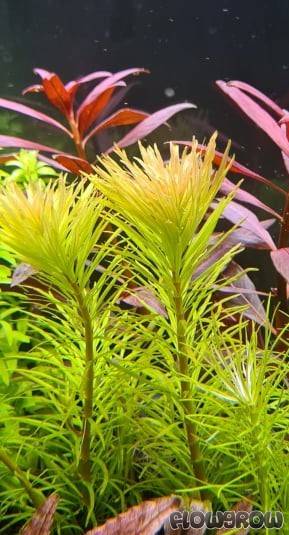_Maq_
Member
Bacopa should have only two leaves per whorl, deeply dissected (therefore looking like many leaves).B. myriophylloides should have many more leaves per whorl than yours have, so I think that's unlikely, any chance you have some pictures of the emersed growth? That might provide some clues.






